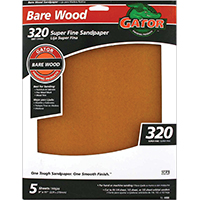

Again, 180-grit is less subtle than 220-grit. For example- 40-grit sandpaper is more coarse than 60-grit. It’s the size of abrasive material on paper. The sandpaper grit indicates the coarseness of sandpaper.

What Is Sandpaper Grit? What Does the Number on It Say? Roughening Surface:Īs preparation for gluing, you’ll make the surface rough with comparatively coarse sandpaper. Removing Stains:įor sander to remove old paint or a layer of material from wood, you’ll need a coarser grit of sandpaper. In painting and wood finishing work, you’ll sand the surface with a fine-grit to make it smoother. You can use sandpaper for the following projects: Smoothing Surface: Why and When Do You Use Sandpaper?Ī range of grit sizes is available for different uses. Though they are not identical, you can get something similar to the CAMI number by choosing the closest FEPA grit. They indicate the grit size with the letter “P,” like- P-180 or P-220. On the other hand, sandpaper grit sized by the Federation of European Producers of Abrasives or FEPA is manufactured by Staatliche Material Strafanstalt, Darmstadt, Germany, for European grade of Coated abrasives. It determines a gradation scale measured in microns. On behalf of them, The Carborundum Company, Washington produces the supply. CAMI is the Coated Abrasive Manufacturers Institute in the United States. CAMI is USA based, where FEPA is European. The main difference is the location they are being produced. One is the CAMI standard another is the FEPA standard. There are two standards you may find while buying sandpaper. In summary, coarse-grit sandpaper is used for aggressive sanding and removing material quickly, while fine-grit sandpaper is used for smoother sanding and preparing surfaces for finishing. Fine-grit sandpapers are also ideal for sanding between coats of finish or for polishing. It’s also used for sanding down wood, metal, and plastic surfaces to prepare them for refinishing.įine-grit sandpaper, on the other hand, has smaller abrasive particles and is used for lighter sanding tasks, such as smoothing surfaces, removing small scratches, or preparing a surface for staining or painting. The grit size determines the roughness of the sandpaper and affects the sanding process.Ĭoarse grit sandpaper has larger abrasive particles and is used for heavy-duty sanding tasks, such as removing rough surfaces, rust, paint, or varnish. The Difference Between Coarse and Fine Grit SandpaperĬoarse and fine-grit sandpaper refers to the size of abrasive particles on the sandpaper. It is best for eliminating slight marks and creating a glossy finish on paint or metal.
#40 grit sandpaper full
This type has a full grit range but is on the more delicate side. Wet DryĪnother type of sandpaper you’ll come across is known as wet-dry. They are mostly suitable for polishing jobs. Extra Fine Sandpaper: (240, 320, and 400)īetween coats of paint or varnish, you’ll need extra fine grits of 240, 320, or 400, depending on the finish you want. Mostly used for home workshops, this glass paper works for finishing touches. Except for primary sanding, this range is also used for removing marks on the material. Ranging from 60 to 100 grit sizes, this range of sandpapers are suitable for the final rough wood shape.

This size is used for shaping wood, roughly removing previous light coats, and finishing paints. Grit size between 40 to 50 falls in the range. This range is only saved for the most challenging jobs. Also, they are convenient to roughen surfaces for gluing. You can use them for removing varnish, old paint that is very sturdy to remove, and old floors that require extra coarseness. The grit size between 24 to 36 falls in this range. Depending on the coarseness, sandpaper sizes are divided into different range and name as follows: Extra Coarse Sandpaper: (24-36) On most projects, you’ll start with coarse sandpaper and then switch to finer grits. The manufacturers identify grades on the package for fast and easy pick up of the right grit. Selecting the Correct CoarsenessĬhoosing sandpaper becomes easier due to the specific coarseness level marked on the paper. We’ve prepared some fundamental guidelines to follow while choosing the suitable sandpaper grit for your project. So, picking the right number can be difficult when you’re relatively new in this chapter.

They’ve got different grit numbers, and every kind of grit has very different jobs than others. There are various types of sandpapers on the market.


 0 kommentar(er)
0 kommentar(er)
